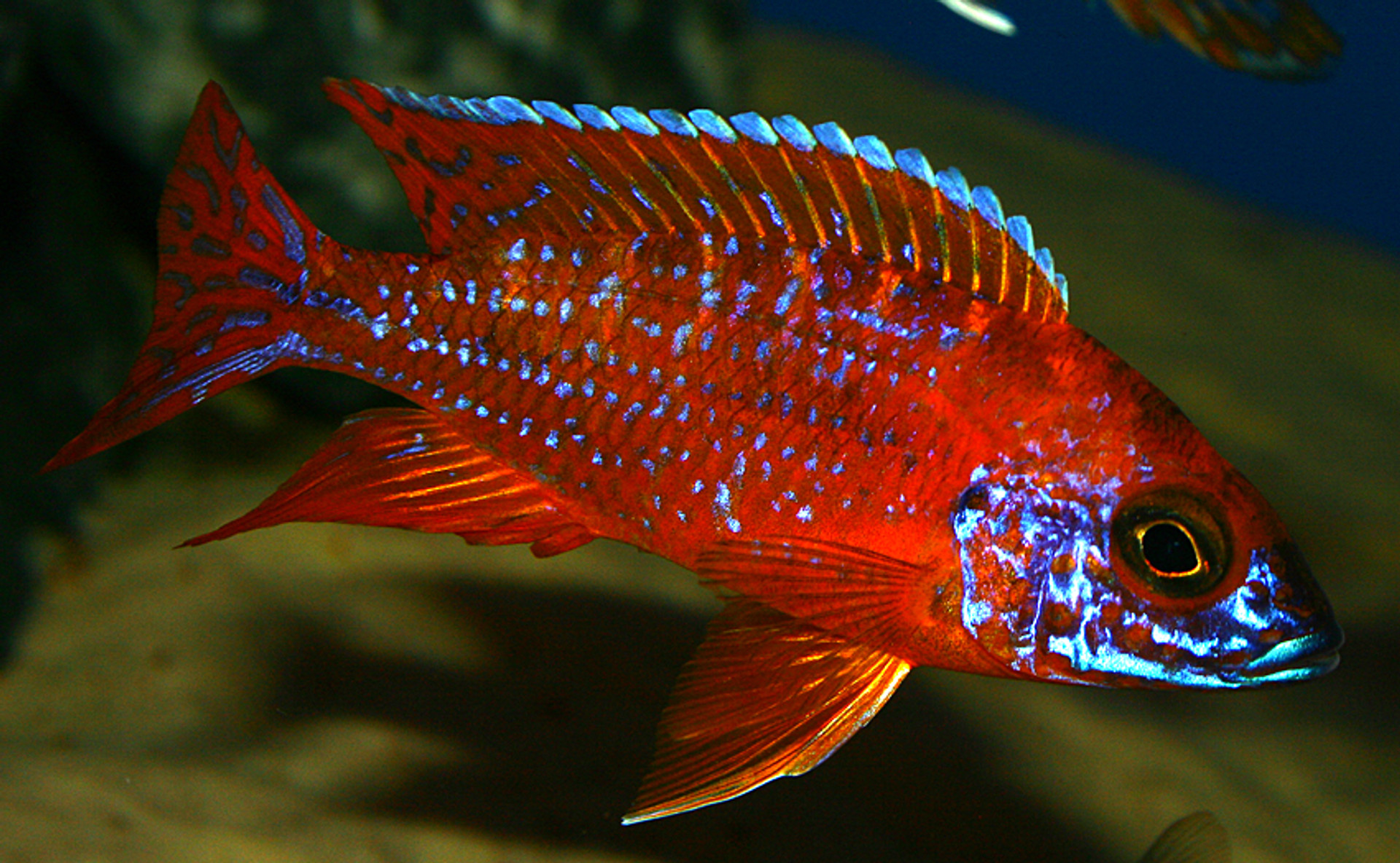Red Cichlids
Are you fascinated by the sight of bright and vibrant colors swimming through your aquarium? Look no further than red cichlids. These fish are known for their bold coloration and unique personalities, making them a popular choice among aquarium enthusiasts.
Pain Points of Red Cichlids
Caring for red cichlids can be challenging for some beginners, causing frustration and discouragement. These fish require a specific water pH level and temperature to thrive, and often need a larger tank due to their territorial behavior. Additionally, some red cichlid species can be aggressive towards other fish in the tank, leading to compatibility issues.
Target of Red Cichlids
If you're looking to add some color and personality to your aquarium, red cichlids are a great choice. They come in a variety of species and sizes, allowing you to find the perfect fit for your tank and personal preferences. Despite their care requirements, many aquarium hobbyists find the maintenance and upkeep of red cichlids rewarding.
Summary of Main Points
Overall, red cichlids are a striking addition to any aquarium, but require specific care and compatibility considerations. However, for those willing to put in the effort, these fish can bring a unique and beautiful personality to your tank.
Why Choose Red Cichlids?
Personally, I have found red cichlids to be a fascinating species to care for. Their vibrant colors and unique personalities never cease to amaze me. One of my favorite species is the Ruby Red Peacock Cichlid, which adds a pop of color to my tank.
In addition to their aesthetic appeal, red cichlids are also known for their intelligence and ability to form bonds with their owners. I have found that my red cichlids recognize me and even anticipate feedings, adding an interactive element to my aquarium hobby.
Caring for Red Cichlids
When it comes to caring for red cichlids, it's important to note that different species have varying requirements. Generally, these fish prefer a pH level between 7.8 and 8.5 and a temperature between 75 and 82 degrees Fahrenheit. They also do best in larger tanks with plenty of hiding places.
One thing to keep in mind is their territorial behavior. It's important to research the specific species of red cichlid you plan to keep, and ensure that they will be compatible with other fish in your tank. Aggression can be minimized by providing adequate space, food, and hiding places.
Why are Red Cichlids So Colorful?
Red cichlids get their bright colors from specialized pigment cells called chromatophores. These cells contain pigments that absorb and reflect light, creating the vibrant hues we see in these fish. The specific colors and patterns can also indicate the fish's gender, age, and mood.
How to Enhance Red Cichlid Coloration
To enhance the coloration of your red cichlids, it's important to provide a healthy and varied diet. Food rich in carotenoids, such as krill and shrimp, can help intensify their colors. Additionally, ensuring proper water chemistry and cleanliness can also help keep colors bright and vibrant.
Question and Answer
1. Can red cichlids live with other fish?
It depends on the specific species of red cichlid and the temperament of the other fish in your tank. Some red cichlids can be aggressive and territorial towards other fish, while others may coexist peacefully. It's important to research and understand the specific needs and compatibility of each fish in your tank.
2. What do red cichlids eat?
Red cichlids are omnivores and will eat a variety of foods, including pellets, flakes, and live or frozen foods. It's important to provide a balanced and varied diet to ensure their health and well-being.
3. How big do red cichlids get?
The size of red cichlids can vary depending on the species. Some may only reach a few inches in length, while others can grow up to a foot long. It's important to research and understand the specific size and requirements of each species before adding them to your tank.
4. How often should I clean my red cichlid tank?
Regular tank maintenance is important for the health and well-being of your red cichlids. Generally, it's recommended to perform water changes of 20-30% every 2-3 weeks. Additionally, regularly cleaning the aquarium substrate and removing debris and uneaten food can help maintain water quality.
Conclusion
In conclusion, red cichlids can be a fascinating and rewarding addition to any aquarium. While they do require specific care and considerations, their unique personalities and vibrant colors offer a memorable experience for any aquarium hobbyist. By understanding their specific requirements and compatibility needs, keeping red cichlids can bring a beautiful and interactive element to your tank.
Gallery
Ruby Red Peacock Cichlid- 1.25 - 2.25 Inch - Bluegrassaquatics.com

Photo Credit by: bing.com / cichlid cichlids
African Cichlid | Red Peacock - Online Cichlids For Sale | The IFISH Store

Photo Credit by: bing.com / peacock red cichlid german african cichlids aulonocara fish species live
RED PARROT CICHLID - Medium - Bluegrassaquatics.com

Photo Credit by: bing.com / cichlid cichlids
Red Jewel Cichlid ( Hemichromis Bimaculatus ) Male - A Photo On Flickriver

Photo Credit by: bing.com / jewel red cichlid hemichromis bimaculatus male
African Cichlid | Red Zebra Cichlid - | The IFISH Store

Photo Credit by: bing.com / cichlid cichlids